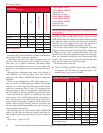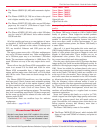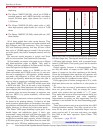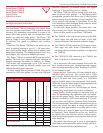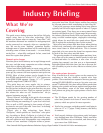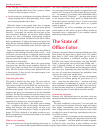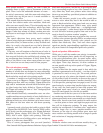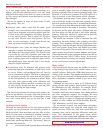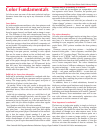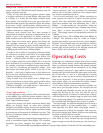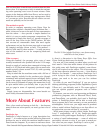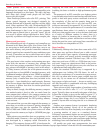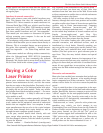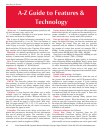
60
Entire Contents © 2006 Prog
ressiv
e Business Pub
lications
.
Copying of Pages Prohibited.To Order: 800 247 2185 or www.betterbuys.com
claim “breakthrough” image quality. The reality, howev-
er, is that image quality has reached something of a
p
lateau, and the latest machines aren’t, as a rule, vastly
different in this respect from those of a year or two earli-
er. Price, speed, and features, more than quality, are what
have changed.
We see the market in terms of three levels of color
image quality. They are:
● Business color, which could also be called “good
enough” color, means that the color used on company
logos, charts, diagrams, and other graphics looks fair-
ly close to the color intended by the author. However,
it is not entirely perfect. This is typical of LED print-
ers and most low-end color laser printers. The key
issue is color consistency, so that color doesn’t vary
fr
om one print to another during a run.
● Photographic color, where the images (whether pho-
tographs or simple documents) go through a process
that makes the color output g
lossy. This kind of color
is provided by solid ink jet printers and some laser
printers, especially those with improved toner that can
print on g
lossy paper stock or specialty paper sold by
the manufacturer. Note that this look is not directly
related to higher resolution.
● Professional color, for designers and graphic artists
preparing high-value documents or other work (such
as covers, folders, and packaging) that will later be
sent to commercial printer
s. This level of image qual-
ity accurately portrays the colors that will be printed
on the final product by the commercial printer. High-
end color laser printers with color calibration and
color-matching software are able to produce this type
of
color quality, though even here the user may have
to work at getting the right settings.
The lines drawn between the various color-quality cate-
g
ories are not absolute, of course. And some printers can
serve more than one purpose. But it’s important to assess
your color needs before you go out and buy a new
machine.
On-demand color printing
Although the most obvious use for color printers may be
to spruce up the documents you currently produce in
black-and-white, these machines can also offer an alter-
native in some cases to commercial printing. Instead of
ha
ving color br
oc
hures produced by a firm of commer-
cial printer
s using offset printing equipment, you could
instead start producing them on a “just-in-time” basis on
your o
wn laser mac
hine
.
However, the per-page cost of an on-demand color laser
print is normally higher than that of commercial offset
printing, especially when it comes to printing longer runs.
However, if you need to produce 50 or 100 copies of a
flyer or postcard, a color laser printer will be a bargain.
On-demand printing using a laser printer also allows
you to avoid the storage costs and waste typically associ-
ated with producing long runs of promotional literature.
You can also keep your materials up-to-date, and you can
personalize them to the needs of recipients. The quality
of the color and the paper may create a different look and
feel from what you may be used to with offset printing,
however. While this method of output may be good for
things like price lists, it has its limitations.
We should also mention a class of machine that falls
somewhere between desktop color printing and offset
printing. These machines include the digital press from
Indigo (now owned by Hewlett-Packard) and production-
level color printers from Xerox and Kodak (not within
the scope of this guide). There are also the very fast color
copier-printers from Canon, Konica Minolta, and Xerox.
These machines fill in the gap between short runs (100 or
less) and long ones (500 to 1,000 or more). In the world
of on-demand color printing, the (mostly) desktop print-
er
s we cover her
e are relative lightweights.
Many vendors
After incr
easing for several years, the number of vendors
in the desktop color laser printer market seems to have
reached a plateau. Early in the 1990s, there were only two
vendors in the mar
ket. That number multiplied by a fac-
tor of 10 over the latter half of the decade as a number of
office equipment companies rushed to get into a new,
f
ast-g
rowing market.
Although you may see as many as 23 different brand
names on color laser printers, keep in mind that some of
the differences are only skin-deep. For example, Ricoh
markets identical color products under the Savin,
Gestetner, and Lanier brand names. Also, many vendors
use other companies’
engines
. For example, HP uses
Canon engines; Xerox uses engines from Fuji Xerox and
OKI (as w
ell as a couple of
home
g
r
o
wn engines);
and a
number of other vendors use Ricoh (formerly Hitachi),
OKI, Matsushita, and Fuji Xerox engines.
Do not assume
,
however, that two printers sold under
different brand names but using the same engine are
exactly the same. While they may have certain things in
common, there can be important differences under the
hood. The information in this guide shows which
machines use what engines and highlights the important
dif
ferences between models that share the same ones.
Better Buys for Business
www.betterbuys.com



